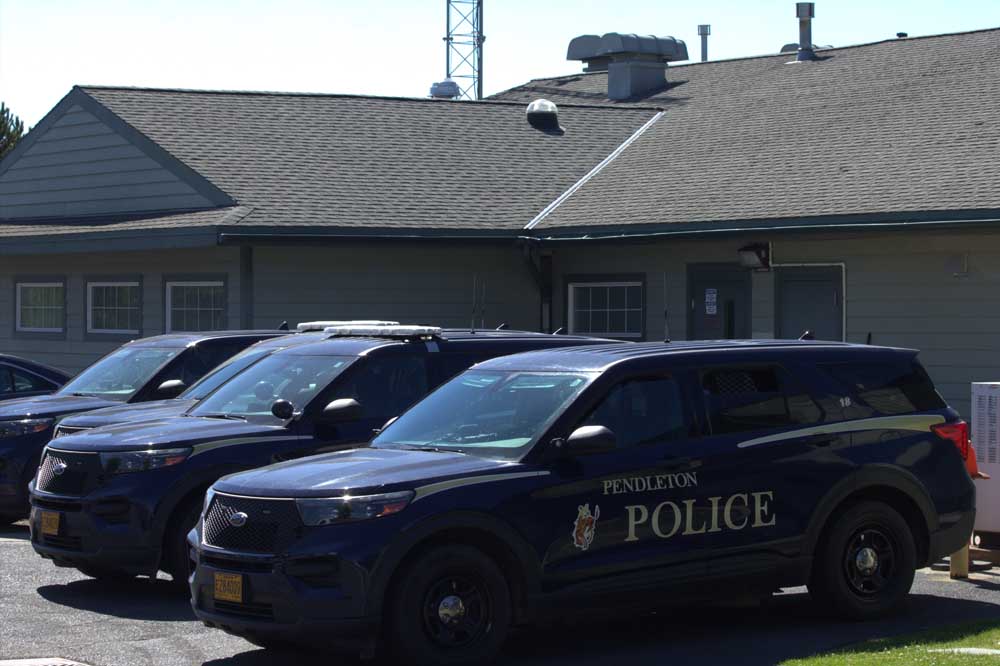A crisis of care
Published 11:00 am Thursday, October 14, 2021

- Grande Ronde Hospital, La Grande, and other hospitals across the state had to write their own triage principles and crisis care standards after the Oregon Health Authority in September 2020 dismissed the state document that guided hospitals in making emergency decisions.
LA GRANDE — Oregon for years held a standardized triage principle in its repertoire for a public health crisis — such as a major earthquake or pandemic. But in September 2020, the state left Oregon hospitals without concrete guidelines for crisis management and away with its crisis care guidelines.
That was right before Oregonians began to experience the highest surge of COVID-19 cases, deaths and hospitalizations, at least up until recently. The Oregon Health Authority has not yet given new guidance in the form of a “Standard Crisis of Care” document, such as those in Idaho or Alaska. Instead, the OHA asked hospitals to make their own plans for rationing care in the event they become overrun by critical-condition COVID-19 patients.
Trending
While cases have been declining statewide in the past weeks, infections in Eastern Oregon Region 9 — from Morrow County to Malheur County — have remained steady.
On Sept. 5, the weekly case rate per 100,000 residents in Eastern Oregon Region 9 was 524. On Sept. 25, three weeks later, that case rate fell slightly to 522 per 100,000, according to Oregon Health Authority numbers. Statewide, that same weekly case rate number was just 244 cases per 100,000 residents using the same OHA data on Sept. 25.
In comparison, the statewide infection rates for Idaho and Alaska — two states that have implemented emergency crisis standard of care protocols for hospitals — were 464 and 672 cases per 100,000 residents, respectively, for the same weekly period, according to data from those states.
Still, the Oregon Health Authority rescinded its 66-page, long-standing “Crisis Care Guidance” document and published in its place a set of priorities and ethical considerations, leaving the question of how to build a fair and just crisis standard of care to individual hospitals.
Absent was any reference on how to score or triage in concrete terms should hospitals face a critical shortage of resources.
“Oregon had crisis care guidelines in place for many years, but in September of 2020 OHA determined that it would no longer reference them because of the potential for their use to perpetuate discrimination and health inequities,” Rudy Owens, a spokesperson with the OHA, wrote in an email.
Trending
In response, hospitals in Eastern Oregon developed their own plans. Grande Ronde Hospital in Union County developed a standard for incidents in which resources become scarce, but has not yet had to use it. Instead, Grande Ronde has been operating well under generalized operational emergency guidelines, according to Mardi Ford, the hospital’s director of communications and marketing.
“We have had a strong commitment to emergency planning here for years and that has served us well,” Ford said in an email. “We are all really well trained now on operating under (our) Hospital Incident Command System.”
As well, Wallowa Memorial Hospital in Wallowa County wrote its own standard of crisis care guidelines in late 2020, when the previous statewide care guidelines were relinquished, according to Communications and Public Relations Director Brooke Pace. Those new guidelines take equity and inclusion into consideration, according to Pace.
Pace, like Ford, noted the hospital has not had to implement those standards of care.
While not mandated, the new Oregon Health Authority guidance tells hospitals to ignore or diminish long-standing principles when it comes to rationing care, including maximizing life-years saved — years of quality life remaining if a patient receives care and recovers. Instead, the new document assesses only in terms of likelihood of surviving their current illness until hospital discharge — even if that patient is terminally ill.
Supporting documents to the new OHA document include an article by Dr. John R. Stone, a bioethicist with the Department of Medicine, School of Medicine at Creighton University in Omaha, Nebraska.
“Past and continued injustices are strong reasons why potential life-years saved should not influence triage priorities for individuals who prospectively will likely survive more than a few months after hospitalization,” Stone contends in the paper.
Stone uses a scenario in which an elderly, disenfranchised patient who belongs to a group of historically oppressed individuals relinquishes care to a younger, more privileged individual who belongs to a group of oppressors, and would have more expected life-years after receiving care.
To be clear, the previous Oregon Crisis Care Guidance protocol made explicit that factors such as race and ethnicity are not acceptable criteria to consider in making triage decisions. Stone, in his article, addressed as much by saying he was not aware of any crisis care standard documents that would even consider making such criteria a factor in medical decisions.
“To my knowledge, published triage models and related analyses explicitly or implicitly incorporate social justice and background concepts of respect for persons and their equal and substantial worth. My stress on the justice- respect-worth framework does not imply otherwise. I presume that all value these core moral precepts,” Stone wrote.
The new guidance from the Oregon Health Authority, published December 2020, reflects those principles but declines to give specifics regarding when exclusion of care might apply, save for small incidences in which patients brings their own ventilators to the hospital.
The document encourages hospitals to create their own rubrics for scoring patients. Commonly, these scores are based on patients’ ability to survive should health care to the patient be abruptly stopped — such as the “sequential organ failure assessment.” There is no mention of vaccination status within the guidelines, and the SOFA makes note of COVID-19 status but does not use it for scoring patients.
“We want to ensure there’s a foundation of health equity that informs these difficult decisions and that hospitals are using tools that are transparent and informed by input from their community,” wrote Owens, representing OHA. “Second, we plan to bring community leaders and providers together to continue to look at practical tools for clinicians and hospitals that incorporate these non-discrimination principles.”









